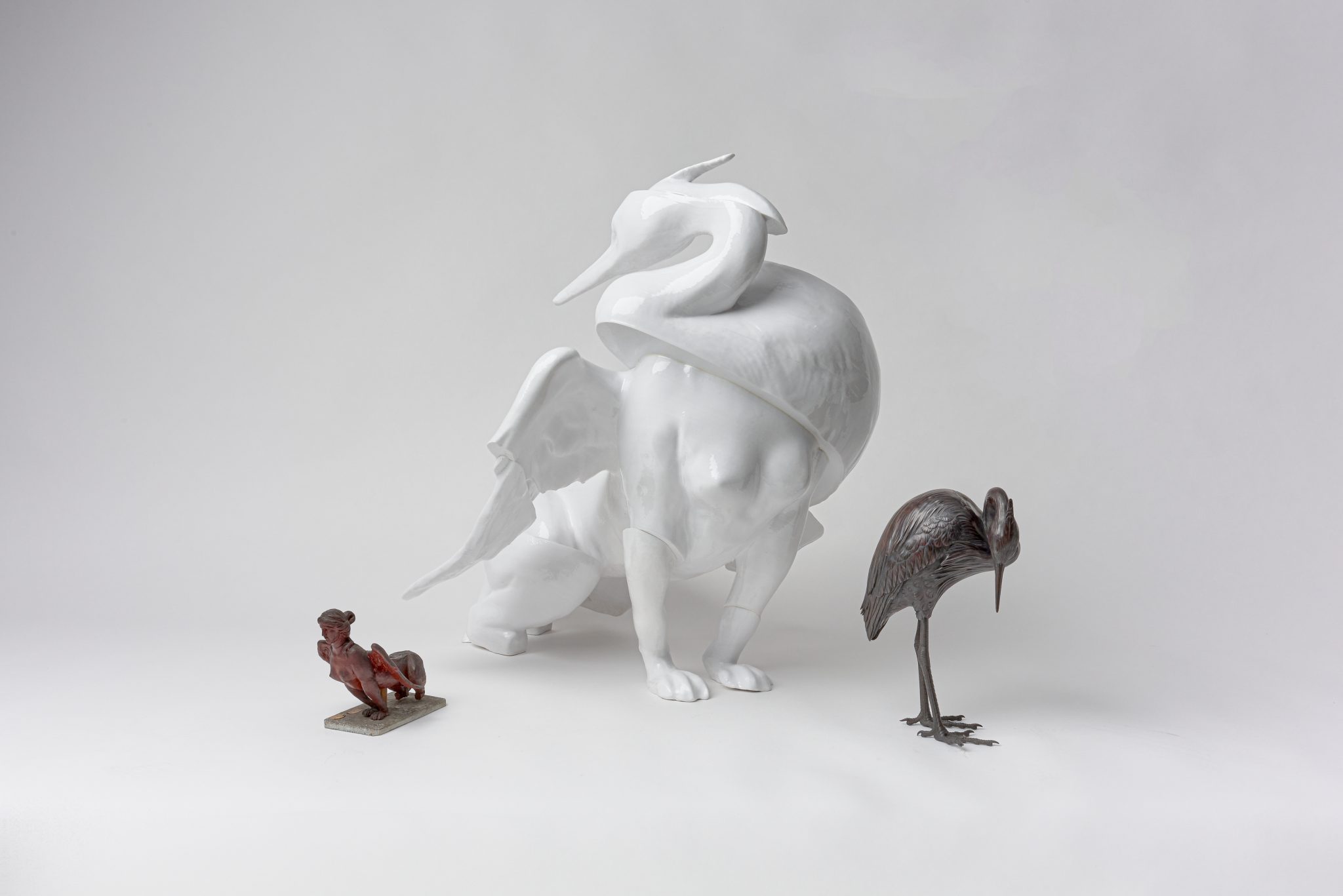In Terminal Beach at MAK Contemporary, Vienna, the collective confront a sense of disorientation at the heart of addressing the environmental crisis
On a monumental LED screen, Troika’s four-minute video animation Terminal Beach (2020) dominates the darkened gallery, beaming out over a large rectangular, water-filled basin that covers much of the floorspace. The London-based collective’s video features a furry robotic form – suggesting a fusion of a primate’s limb and the kind of computerised arm commonly used in the production industry – chopping down what appears to be the last standing tree in a vast, desolate landscape of rising sea levels and mountains. Against a sonic background reminiscent of birdsong (produced in collaboration with the British Antarctic Survey, using radio waves generated by lightning and geomagnetic storms recorded by their researchers) and punctuated by the axe’s echoing, rhythmic boom, the viewer experiences the action from different perspectives. From the cinematographic eye of the camera and the surveillance eye of a drone, the point of view shifts to that of the robotic figure itself and, in the final sequence, that of the tree, which perceives the action from within. The tree does not fall; it continues to resist the persistent chopping that, as the film loops, goes on into infinity.
The distant sky and land reflected in the basin form a flooded landscape, sometimes lit bright green, sometimes dark purple by the changing light emanating from the screen and the colour-matched LED lights behind it. The basin is inhabited by seven glossy white sculptures of hybrid creatures, each about a metre tall, as if emerging from future waters ready to adapt to changed conditions. Titled Crossers (all but one made in 2024), the 3D-printed objects are a continuation of the series Compression Loss (2017) and I woke to find myself scattered across continents (2023), in which Troika have researched public collections of various museums in person as well as through publicly accessible online databases of digitised artefacts and artworks to explore the overlap between the virtual and the physical, combining fragments of data into new hybrid entities, scanned, collaged in software and then 3D-printed. With Crossers, Troika focus on figures from Ancient Greece and/or Egyptian mythology (such as the phoenix, the sphinx, Horus and Anubis), said to have the ability to transcend boundaries, whether between life and death or heaven and hell; creatures who are themselves composites of humans and animals or plants, at once earthly and afterlife beings.

Take, for example, a heron-headed sphinx (Heron Sphinx, 2024), created by ‘breeding’ two smallscale artefacts from the MAK collection: a wax sphinx made by the Imperial Royal Vienna Porcelain Manufactory in Vienna in the mid-to-late eighteenth century and a bronze cast of a heron (with a little beetle) made in Japan in the late nineteenth century. Existing both digitally and physically, the motionless figure is a marker of the world to come, unstable and unknowable, where the divisions between beings, disciplines and hierarchies begin to merge. But could the Heron Sphinx also have been born out of past waters? Rising, reaching the pinnacle of its life, sinking and then collapsing, only to emerge and undergo a similar process again?
Terminal Beach borrows its title from J.G. Ballard’s 1964 collection of dystopian science fiction short stories, including the 1961 story ‘Deep End’, in which Earth is almost deserted due to the overexploitation of its resources in order to colonise other planets. A young man, Holliday, decides not to join one of the last voyages to Mars and instead stays and observes what remains of life on Earth before its inevitable extinction. How to see beyond the approaching horizon of the catastrophic end? Here, Troika, in search of their own coping strategies, confront a sense of ambiguity and disorientation at the heart of addressing the environmental crisis, linked to a worldview inherited from the Enlightenment that places humans at the top of a hierarchy, with the rest of nature subordinated. The exhibition challenges this monolithic worldview by focusing on the questions of transition (and permeability) that characterise our time, suggesting that even after the climate catastrophe that marks our Anthropocene ecologies, the evolution of life-forms will continue; radically new ways of being will emerge. ‘In the next few decades, [AI] will be likely to gain the ability even to create new life forms, either by writing genetic code or by inventing an inorganic code animating inorganic entities,’ writes Yuval Noah Harari in his new book, Nexus. What stories will future structures/configurations tell about our time?
Terminal Beach at MAK Contemporary, Vienna, 1 May – 11 August
